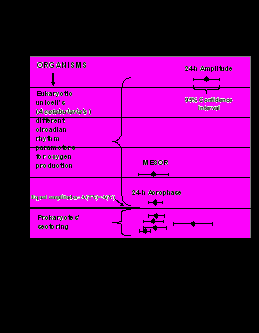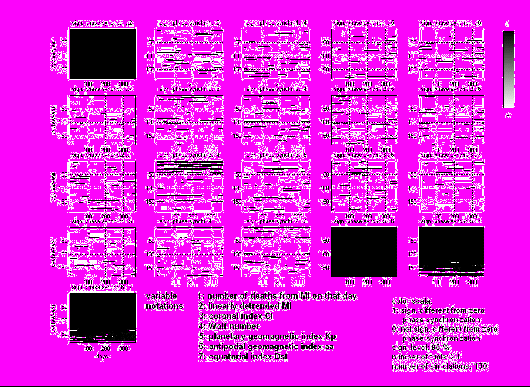Г. Н. Застенкер Институт космических исследований ран одним из самых «геоэффективных»
| Вид материала | Документы |
- Школа молодых ученых 09. 00–09. 30 Регистрация участников Школы, 21.49kb.
- Доклад на Всероссийской научной конференции «От СССР к рф: 20 лет итоги и уроки», 140.15kb.
- Российская академия наук санкт-петербургский научный центр ран институт лингвистических, 13.04kb.
- Приглашение VIII международная научно-техническая конференция, 33.65kb.
- Программа отчетной конференции по программе фундаментальных исследований Президиума, 123.52kb.
- Ю. С. Пивоваров Прошу подтвердить получение, 33.67kb.
- Минералогический музей им. А. Е. Ферсмана ран институт лингвистических исследований, 14.81kb.
- Теоретико-методологические основы системных информационно-аналитических исследований., 920.39kb.
- Проводит XIV международная научная конференция, посвященная памяти генерального конструктора, 1295.48kb.
- И власть в истории цивилизаций, 742.38kb.
Chronomics: a cartographic memory in chronomes (time structures) of exophased human to prokaryotic endocycling
Franz Halberg*, Germaine Cornélissen*, Piero Faraone∆, Bärbel Schack†, Elena V. Syutkina¶, Sergey Chibisov‡,
Othild Schwartzkopff*, Rita Jozsa§, George S. Katinas*, Earl Bakken•
*Halberg Chronobiology Center, Univ. of Minnesota, Minneapolis, MN, USA; ∆Milan, Italy; †Univ. of Jena, Germany (deceased);
Institute of Pediatrics, Russian Academy of Medical Sciences, Moscow, Russia; ‡Russian People's Friendship Univ., Moscow, Russia; §Univ. of Pecs, Hungary; •North Hawaii Community Hospital Inc., Kamuela, HI, USA
C
 riteria (confirmed by molecular biology) that constituted indirect evidence for endogenous aspects of the photically synchronized circadian system apply to non-photic cycles (1). A first line of evidence was a free-run from a synchronizer when one exists, e.g., the social day or week, upon removal of the receptor for the information, e.g., the eye; or the finding of non-overlapping 95% confidence intervals when phenomena loosely coupled in and around organisms interact but are not locked into a consistent phase. Another criterion of endogenicity of cycles is the manifestation after a single stimulus that carries no information concerning any period of a cycle or rhythm, indicating that the period of such endocycling is anchored in the gene pool of the population. (We deal with exophased endocycling rather than autophasing.) The biological signatures of non-photic environmental cycles are large early in ontogeny about 7-day (circaseptan) amplitudes are larger than those of circadians and transyearly (~1.3- and 1.6-year) amplitudes are larger than those of circannuals in the circulation of human newborns and in the excretion of the metabolites of steroidal hormones by an adult and further in the physiology of a unicell that has been around presumably for about 500 million years; but transyears and circaseptans have a smaller amplitude in bacteria, as compared to the amplitudes of the precise year or day hinting at different paths in phylogeny, Figure 1 (above). In body length ~21-yearly (and numerically about 10.5-yearly) spectral components are larger in amplitude than circannual ones. The differences in relative prominence of some non-photic vs. photic cycles between eukaryotes and prokaryotes constitute an unsolved but important evolutionary challenge in the cartography of our past, which must be based on all (many still unmapped) components of time structure. The new broadened spectrum of biological cyclicities and rhythms may be environmentally resonant at many more frequencies than those coded in the genome, as time-varying synchronizations and coherences reveal (2), Figure 2 (below). This finding accounts for much prior controversy while opening new measurable perspectives of living matter's links with the environment.
riteria (confirmed by molecular biology) that constituted indirect evidence for endogenous aspects of the photically synchronized circadian system apply to non-photic cycles (1). A first line of evidence was a free-run from a synchronizer when one exists, e.g., the social day or week, upon removal of the receptor for the information, e.g., the eye; or the finding of non-overlapping 95% confidence intervals when phenomena loosely coupled in and around organisms interact but are not locked into a consistent phase. Another criterion of endogenicity of cycles is the manifestation after a single stimulus that carries no information concerning any period of a cycle or rhythm, indicating that the period of such endocycling is anchored in the gene pool of the population. (We deal with exophased endocycling rather than autophasing.) The biological signatures of non-photic environmental cycles are large early in ontogeny about 7-day (circaseptan) amplitudes are larger than those of circadians and transyearly (~1.3- and 1.6-year) amplitudes are larger than those of circannuals in the circulation of human newborns and in the excretion of the metabolites of steroidal hormones by an adult and further in the physiology of a unicell that has been around presumably for about 500 million years; but transyears and circaseptans have a smaller amplitude in bacteria, as compared to the amplitudes of the precise year or day hinting at different paths in phylogeny, Figure 1 (above). In body length ~21-yearly (and numerically about 10.5-yearly) spectral components are larger in amplitude than circannual ones. The differences in relative prominence of some non-photic vs. photic cycles between eukaryotes and prokaryotes constitute an unsolved but important evolutionary challenge in the cartography of our past, which must be based on all (many still unmapped) components of time structure. The new broadened spectrum of biological cyclicities and rhythms may be environmentally resonant at many more frequencies than those coded in the genome, as time-varying synchronizations and coherences reveal (2), Figure 2 (below). This finding accounts for much prior controversy while opening new measurable perspectives of living matter's links with the environment.Widely transdisciplinary cyclicities pertain, among other fields of medicine, to bioastronautics for an elevated disease risk detection that if unrecognized would lead to disaster in space and to astrobiology: they bear upon our evolutionary past, reflected in exogenously resettable, thus exophased, partly endogenous cycling that resonates today with many periods, some constituting near-matches of current and/or past environmental cycles (1-3). 1. Halberg F et al. J Circadian Rhythms 2003; 1: 2. 61 pp. www.JCircadianRhythms .com/content/pdf/1740 3391/1/2.pdf · 2. Halberg F et al. Neuroendocrinol Lett 2003; 24: 355-380 · 3. Cornélissen G et al. Biomed Instrum Technol 1999; 33: 152-187. Support: GM-13981 (FH); OTKA T 032532 (RJ)
.

ВРЕМЕННЫЕ ХАРАКТЕРИСТИКИ ГЕОМАГНИТНЫХ ПУЛЬСАЦИЙ Рс1 В ДИАПАЗОНЕ 0.2-5.0 Гц ПО ДЛИТЕЛЬНЫМ РЯДАМ НАБЛЮДЕНИЙ
Э.Т. Матвеева1, Р.В.Щепетнов1, А.В.Гульельми2
1 Геофизическая обсерватория Борок, РАН
2 Институт физики Земли РАН
Исследованы длинные непрерывные ряды наблюдений (1957-1995) геомагнитных пульсаций типа Рс1 в диапазоне частот 0.2 – 5.0 Гц на двух среднеширотных и двух субполярных обсерваториях восточного полушария. Для единообразия представления информации и для удобства сравнительного анализа введен так называемый N-индекс, характеризующий активность Рс1. Приведена информация о суточной, сезонной и циклической вариациям активности Рс1, о связи Рс1 с солнечной и геомагнитной активностью, а также с секторной структурой межпланетного магнитного поля и параметрами солнечного ветра перед фронтом магнитосферы (плотность, скорость, межпланетное магнитное поле). Сделан анализ широтной зависимости активности Рс1. Указано на возможность долгосрочного прогнозирования изменений глобальной активности Рс1 и сделан вывод о том, что очередного повышения активности следует ожидать в 2006-2007 годах. Намечен предварительный план поиска биотропных характеристик Рс1. Результаты данной работы безусловно найдут применение при исследовании биологических эффектов солнечной активности, поскольку электромагнитные колебания типа Рс1 являются не только существенным элементом космической погоды, но и одним из важных экологических факторов. Работа выполнена при поддержке РФФИ 03-05-64361.
